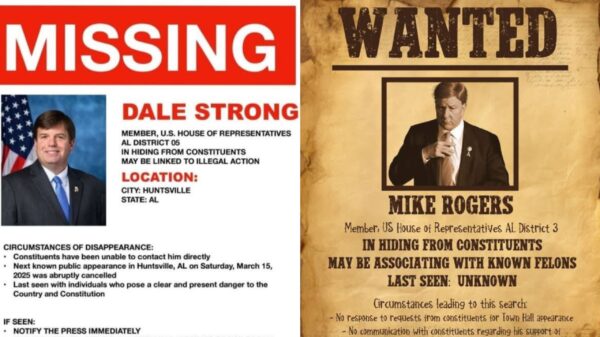By Brandon Moseley
Alabama Political Reporter
On Monday, August 10, US Representative Martha Roby, warned that President Obama’s new energy plan will cost American families higher utility bills while costing jobs.
Congresswoman Roby said in an email to constituents, “Last week, President Obama announced his ‘Clean Power Plan’ and with it a costly national energy tax that will negatively impact American families and jobs. Despite the significant increase this will cause in energy bills for hardworking taxpayers, this plan actually does little to nothing to alter the impact of future climate change.”
Rep. Roby wrote, “Under the plan, the Environmental Protection Agency (EPA) will implement stringent regulations limiting carbon dioxide emissions from power plants, hiking rates and shutting down energy plants, especially in the coal industry. And while I think we can all agree that achieving more renewable, reliable and safe energy is important, more regulations and burdensome expenses to American families are not ways to go about it.”
The conservative Alabama Congresswoman said, “It’s disappointing, but not surprising, to see the president is once again more focused on his ‘legacy’ than he is on the priorities and needs of the American people. The House has pushed back on harmful energy policies like the ‘Waters of the United States’ rule with the passage of the Regulatory Integrity Protection Act and stringent regulations on power plant emissions with the passage of the Ratepayer Protection Act. We will continue our work to ensure every family has access to affordable energy and to protect American jobs.”
The President of the Institute for Energy Research Thomas Pyle wrote in The Wall Street Journal on August 10 that:
“On Aug. 3, the Environmental Protection Agency issued its Clean Power Plan for Existing Power Plants, which requires states to reduce carbon-dioxide emissions by 32 percent (from 2005 levels) by 2030. To achieve this goal, states will have to close coal-fired electricity-generating plants and replace them with natural gas and renewables. The Energy Information Administration expects coal plant closures to reach 90 gigawatts by 2020 under the EPA’s rule—enough to deliver reliable power to about 73 million Americans. Using data from the Energy Information Administration and the Federal Energy Regulatory Commission, they found that existing nuclear plants generate reliable electricity, on average, at $29.60 per megawatt-hour—one million watts expended for one hour. Existing hydro, coal and natural gas aren’t far behind, at $34.20, $38.40 and $48.90, respectively. These figures are derived from self-reported data the government collects annually from individual generators. But compare these costs with the costs of new sources. At $73.40 per megawatt-hour, electricity generated from new natural gas plants is about twice as expensive as from existing coal plants. This is due mostly to the plant’s upfront capital costs. Replacing coal with renewable sources is even more expensive. The IER study found that installing and operating new wind facilities would cost $106.80 per megawatt-hour. This owes largely to wind power’s parasitic effect on the electric grid—forcing reliable generators to ramp up and down, and thus operate at higher cost, to accommodate random and volatile gusts of wind. Wind and solar can’t replace traditional energy sources in the real world. When the wind isn’t blowing or the sun isn’t shining, wind and solar require reliable sources like coal and natural gas to back them up. This imposes additional costs on natural gas plants, which have to be ramped up and down rapidly in response to unpredictable wind and solar output.”
The IER wrote in the actual study that the policy will not impact climate change: “EPA sees its finalized plan resulting in renewable energy garnering a 28 percent share of electricity generation in 2030, up from 22 percent in its proposed plan, while coal generation falls to 27 percent, down from about 40 percent today. EPA’s analysis of the proposed plan expected coal generation’s share to drop to 31 percent in 2030. An analysis of the earlier proposed plan using EPA’s own modeling showed the impact of that plan to affect global temperature by a mere 0.02 degrees Celsius in the year 2100, an almost undetectable amount. Cumulative economic costs over the proposed plan’s 2020 to 2030 compliance period totaled $1.23 trillion in lost GDP (in 2014 dollars). The peak annual loss of $159 billion is expected to occur in 2025; the average annual GDP loss over the compliance period is estimated at $112 billion. According to EIA modeling results, it will cost an average of $199 in lost economic growth for each ton of carbon dioxide reduced between 2020 and 2030. When different government agencies provide conflicting analyses, it is hard to find credibility in EPA’s optimistic results in support of its rule.”
Like most major Obama administration policies, the Patient Protection & Affordable Care Act of 2010 being the big exception, this is being done by executive action and a lot of reinterpretation of long existing statute. The plan also usurps states’ authority to regulate the electricity industry. In Alabama, the Public Service Commission (PSC) has been responsible for regulating the power plants of the State.
Congresswoman Martha Roby represents Alabama’s Second Congressional District.






















































